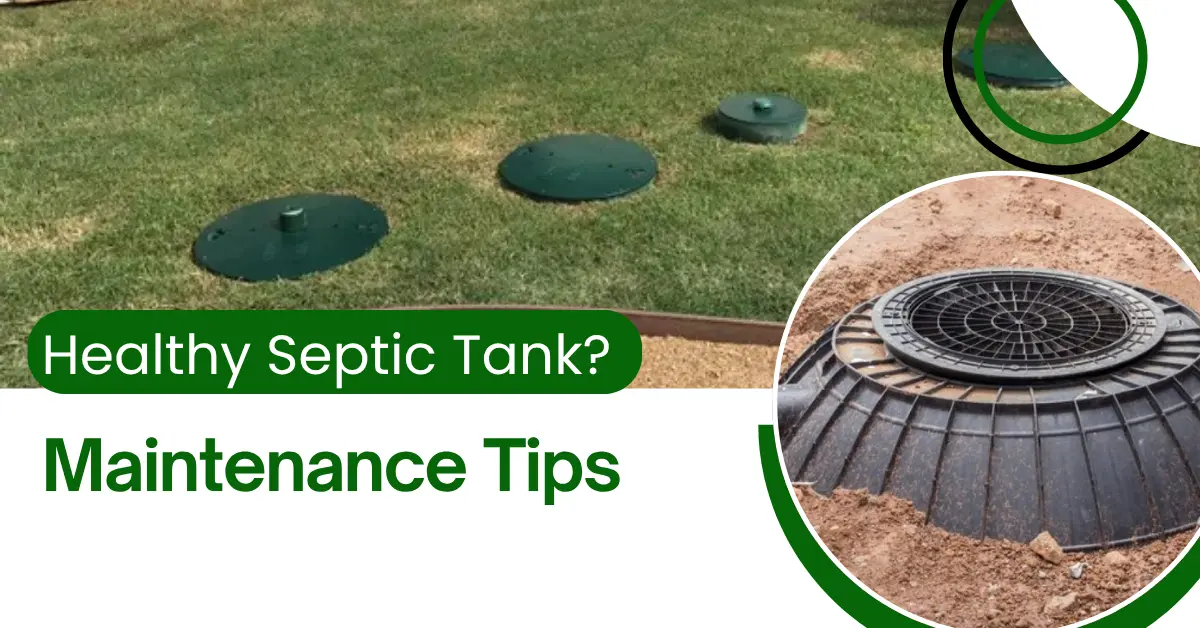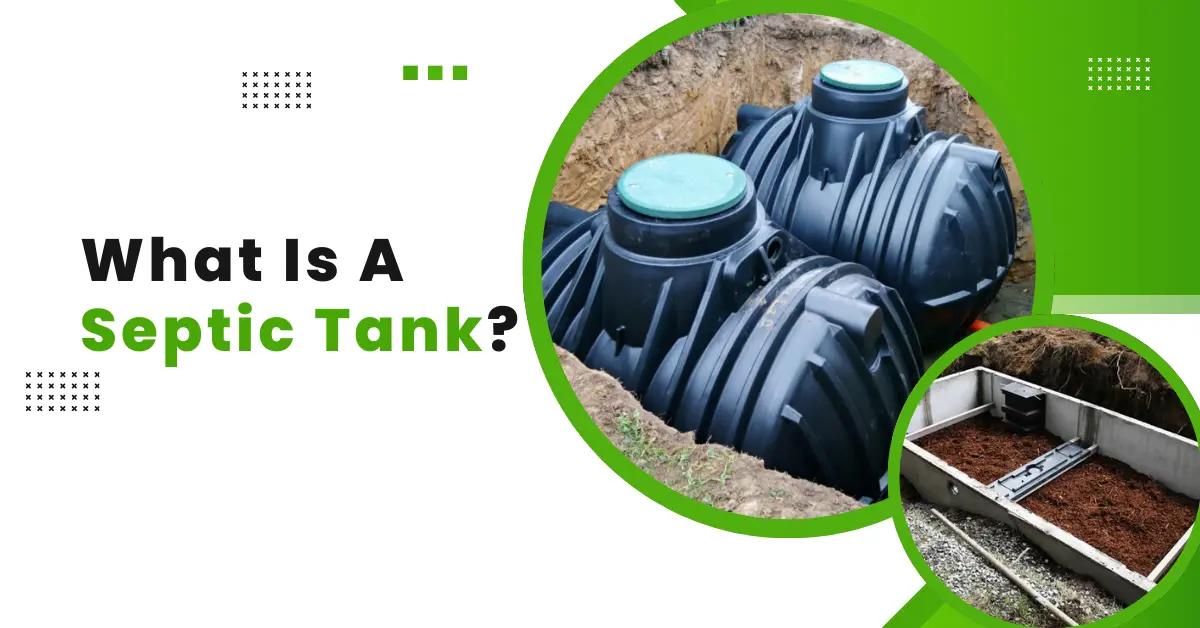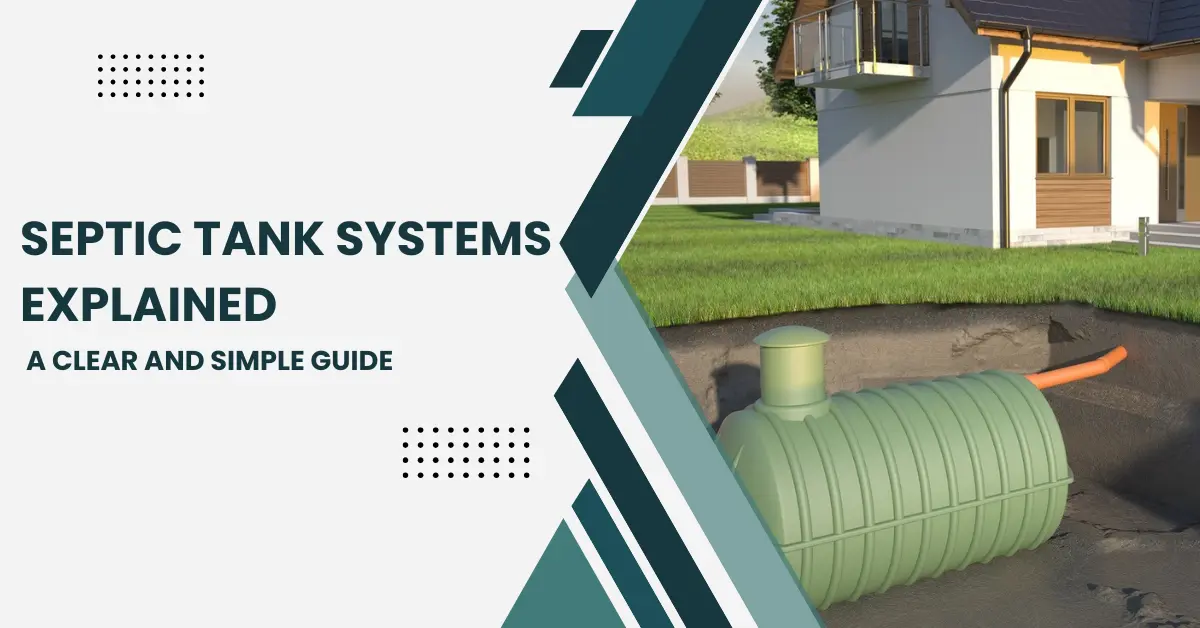If you rely on a septic tank, you already know it’s not something you want to think about until there’s a problem, and by then, it’s usually a big one. A septic system is an underground wastewater treatment setup, mostly used in homes that aren’t connected to city sewer lines. It takes everything you flush or drain and breaks it down safely.
The catch? When neglected, these systems can fail in expensive, messy ways. Therefore, you need to know how to keep septic tank healthy. Think sewage backups, foul smells, and even full-on lawn-swamping disasters. The good news is that most of these issues are totally preventable with just a little ongoing care.
In this guide, I’ll walk you through real-world, practical steps to keep your septic tank healthy based on what works, what people actually do, and what will save you from those nightmare repair bills.
Quick List: how to keep septic tank healthy
Here are the key habits to maintain a healthy septic system:
- Pump your tank every 3 – 5 years
- Conserve water to avoid overloading the system
- Flush only human waste and toilet paper
- Avoid pouring grease, food, or chemicals down drains
- Protect your drainfield from roots, weight, and water
- Space out laundry, showers, and water-heavy tasks
- Use septic-safe, biodegradable cleaning products
- Watch for warning signs like odors or slow drains
- Educate everyone in the household on septic rules
- Avoid additives unless a pro specifically recommends them
Top 10 Ways to Keep Your Septic Tank Healthy
If you’re wondering how to make your septic system last longer and avoid problems, the answer lies in your everyday habits. Below are the most important things you can do to keep your septic tank working the way it should.
Each of these tips may seem small, but together, they make a big difference.
1. Pump Your Septic Tank Every 3 to 5 Years
This is the single most important thing you can do to keep your system healthy.
Over time, solids build up in the tank. If you don’t pump them out, they’ll eventually overflow into the drainfield, clog the pipes, and destroy the whole system.
How often should you pump? Every 3 to 5 years is standard, but if you have a large household or use lots of water, you might need to pump more often. A professional can measure sludge levels and tell you when it’s time.
Also, don’t skip inspections. Even if pumping isn’t due yet, an annual inspection helps catch issues like tank cracks, early backups, or signs of system failure before they get expensive.
2. Conserve Water to Avoid Overloading the System
Every drop of water that enters your home eventually flows into your septic system. Using too much water in a short amount of time can overload the tank, preventing solids from settling and sending untreated wastewater into your drainfield.
That’s why smart water usage is vital. Fixing leaks, installing low-flow toilets and showerheads, and spacing out water-heavy tasks like doing laundry or running the dishwasher can significantly reduce the strain on your system. A few small adjustments in your water habits go a long way toward protecting your septic tank from overwork and premature failure.
3. Watch What You Flush (and What You Don’t)
One of the easiest ways to protect your septic tank is to be extremely mindful about what you flush. The only things that should go down your toilet are human waste and septic-safe toilet paper, period.
Products like wipes (even those labeled “flushable”), tampons, paper towels, diapers, and cat litter may go down the toilet, but they don’t break down properly and can cause blockages or disrupt the tank’s bacterial balance. Even medications can be harmful, as they may kill the essential bacteria your system relies on. Creating a strict no-flush list and teaching it to everyone in your household is a simple yet powerful step toward keeping your septic system healthy.
4. Avoid Pouring Grease, Food, and Chemicals Down the Drain
Grease, fats, food scraps, and chemicals are your septic tank’s worst enemies. Grease may go down the drain hot, but it eventually cools and solidifies, coating your pipes and contributing to blockages in the tank. Food waste, especially oily or starchy items like pasta and rice, can add unnecessary solids to your system, increasing the load.
Harsh chemicals such as bleach, ammonia, and drain cleaners might keep your sink sparkling, but they kill the beneficial bacteria that help break down waste in the tank. Instead, scrape food into the trash, wipe pans before washing, and use gentle, biodegradable cleaners to protect your septic system’s natural balance.
5. Protect Your Drainfield from Damage
Your drainfield is just as important as the tank itself; it handles the final treatment stage by filtering wastewater through soil. But it’s delicate and easy to damage if you’re not careful. Parking vehicles, building sheds or patios, or even planting trees too close can compact the soil or damage the pipes beneath.
Tree roots, in particular, are known to invade and clog drainfield lines. Additionally, be sure that rainwater runoff from gutters or driveways doesn’t pool over the area, as excessive moisture can flood the system. The key is to treat the drainfield with care: keep it open, free of heavy objects, and clear of deep-rooted plants.
6. Space Out Water-Heavy Activities
Your septic system can only handle so much water at once, so timing matters. Running multiple water-heavy appliances like washing machines, showers, and dishwashers all at once can overwhelm the system, pushing too much wastewater into the tank and out to the drainfield before it has time to settle properly.
Instead, stagger your water use throughout the day or week. For instance, run just one or two laundry loads per day, take showers at separate times, and use your dishwasher in off-hours. These simple scheduling changes help prevent overload and give your system time to function as designed.
7. Use Septic-Safe Cleaners and Products
Not all cleaning products are created equal especially when you have a septic tank. Harsh chemical cleaners can disrupt the biological ecosystem inside your tank, killing the bacteria needed to break down waste. Instead of bleach or chemical-laden soaps, opt for septic-safe options that are biodegradable, phosphate-free, and non-toxic.
Baking soda, vinegar, and plant-based cleaning products are great alternatives for everyday cleaning tasks. Even in your laundry room, try switching to low-sudsing, septic-safe detergents. By choosing the right products, you help maintain a healthy bacterial balance and ensure the system continues working efficiently.
8. Know the Warning Signs of Trouble
Recognizing the early signs of septic trouble can help you act before things get worse. Warning signs include slow-draining sinks, toilets that gurgle, unpleasant odors indoors or near the yard, and patches of extra-green or soggy grass above your drainfield.
These symptoms often point to a clogged tank, blocked drainfield, or failing system, and the sooner you address them, the less damage they’ll cause. Don’t ignore small issues or wait for a full backup. Call a septic professional right away if you notice any of these red flags. Routine maintenance may fix it, but waiting could cost you a full system replacement.
9. Talk to Your Family or Housemates
No septic system stays healthy if the people using it don’t know how it works. Whether you live with kids, roommates, or guests, it’s important to explain the basics of septic care. Teach everyone what can and can’t go down the toilet or drain, and make sure they understand how water usage affects the tank.
Even putting up a small sign in the bathroom or kitchen can be a helpful reminder. Everyone in the house should be part of the effort because all it takes is one person flushing wipes or pouring grease to cause a major issue. Shared knowledge leads to shared responsibility, and that’s key to long-term system health.
10. Skip the Additives (Unless a Pro Says Otherwise)
There’s no shortage of septic tank additives on the market, claiming to reduce the need for pumping or boost bacterial action. But the reality is, most of them aren’t necessary, and some might even harm your system. If your septic tank is being maintained properly and not overloaded with chemicals or solids, it already has the bacteria it needs to function.
According to both the EPA and experienced professionals, regular inspections and good usage habits are far more effective than additives. Unless your septic professional specifically recommends one based on your system’s condition, save your money and stick with what works: routine care and smart practices.
Conclusion
Keeping your septic tank healthy isn’t rocket science; it just takes some awareness and a bit of effort. By understanding your system, pumping it regularly, conserving water, and avoiding harmful substances, you’re protecting your home from costly repairs and disgusting surprises.
Remember: the little things you do every day, spacing out water use, being mindful of what you flush, using the right cleaners all add up. When your septic system is healthy, you barely notice it. And that’s exactly how it should be.
A healthy septic tank means fewer emergencies, longer lifespan, and peace of mind. So take care of it it’s worth it.
FAQs
How often should I pump my septic tank?
Every 3 to 5 years depending on household size and usage.
Can I use bleach in a home with a septic system?
Small amounts are fine occasionally, but regular use should be avoided.
What’s the worst thing to flush into a septic tank?
Non-biodegradable items like wipes, cat litter, or medication.
Should I use additives to help my septic system?
Usually not necessary unless recommended by a professional.
How can I tell if my drainfield is failing?
Soggy spots, foul smells, or unusually green patches in the yard are key signs.






